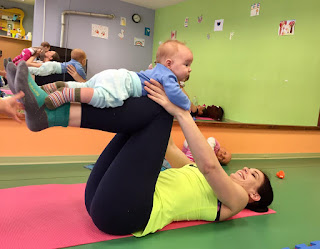Online workout – Pros and Rules

This is a weird situation we are in, it calls for a lot of changes in our lives – even in our workout habits. It is quite a disadvantage that we cannot do our regular workout with our regular coach and we miss our training partners. On the other hand, it is time of workout adventures – we can try out a lot of new things we could not before because of time and space. As a pre- and postnatal fitness specialist I train pregnant women and help them in regeneration after giving birth. I would like to help all the moms at home, taking the first steps of this workout adventure, with this article to make sure that you are all safe. D uring an online class the trainer is not able to take care of you one-by-one, to custom make the class, so it is very important for you to know, what to do while the others are doing the crunches. These are the most important rules int the first 6 month of the post-partum period – but you also need to take them into consideration while breastfeeding...





